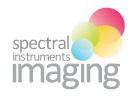Attana biosensors provides a reliable, fast and versatile label-free method to study molecular interactions.

Automated microscopy and Spatial Proteomics
Real-time, label free cell analysis
Nano and micro particle analysis

Accelerate to discover
Related topics
Theranostics: From Mice to Men and Back

Jun 25, 2024
Recorded webinar
Presenters: Prof. Dr. Ken Herrmann and Prof. Dr. Katharina Lückerath – Moderator: Hannah Notebaert
Orion 2024 AACR poster: 17-plex single-step stain and imaging of cell Lung Carcinoma

Jun 21, 2024
RareCyte Orion is a benchtop, high resolution, whole slide multimodal imaging instrument. A combination of quantitative...
Hypoxia in the Tumor Immune Microenvironment (TIME)

Jun 6, 2024
Thursday, 11 July 2024, 16:00 CET | 10:00 EST
Zaver M. Bhujwalla, PhD
X-RAD 320 for irradiation therapy during quantifying study for in vivo collagen reorganization

Jun 5, 2024
Quantifying in vivo collagen reorganization during immunotherapy in murine melanoma with second harmonic generation...
Use of MRI and microCT to evaluate gene therapy for the treatment of discogenic back pain

Jun 4, 2024
MRI images were obtained using the 9.4T Bruker BioSpec system, equipped with 40 mm 1H quadrature volume resonator, and...
Exosome-Mediated Delivery of Small Molecules, RNA & DNA for Development of Novel Cancer Therapeutics

Jun 3, 2024
Disha Moholkar of University of Louisville's Gupta Lab
Tuesday, June 11, 2024, 6:30 PM...
Emulate in vivo conditions – introduce shear flow to your experiments with BioFlux system

May 27, 2024
Most research is still conducted in vitro without the presence of flow. We use the BioFlux System to give you the...
High-frequency Ultrasound System For Preclinical Imaging

May 13, 2024
The Prospect T1 is an innovative high-frequency ultrasound system designed specifically for in vivo preclinical imaging...

Jun 1, 2016
A novel method for facile fabrication of glycopolymer-based iron oxide nanoparticles (GIONs) is developed. Via perfluorophenylazide photochemically induced C–H insertion, alkynyl groups were introduced onto the polymer which was precoated on the iron oxide nanoparticle surface. GIONs were then prepared by conjugating the azide-functionalized carbohydrate to the introduced alkynyl groups via click chemistry. Polyvinyl alcohol-coated and dextran-coated iron oxide NPs were chosen as scaffolds to attach two different carbohydrates, α-D-mannose and β-D-glucose, to fabricate multivalent GIONs, respectively. The multivalent GIONs demonstrated high binding affinities towards the corresponding lectins in both protein and cell chips. As a proof of concept, fluorescent GIONs (Gal-RhB-IONPs) were fabricated, which showed selective and efficient internalization by ASGP-R overexpressing HepG2 cells targeted.
Brand profile
Attana biosensors provides a reliable, fast and versatile label-free method to study molecular interactions.
More info at:
www.attana.com/